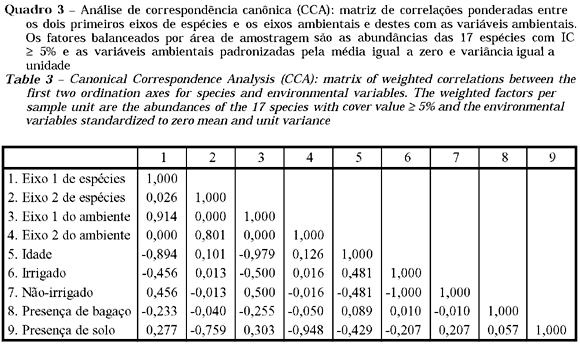The mining of coastal sand dunes in Mataraca, Paraíba, Brazil, to extract titanium-derived minerals requires the removal of the original vegetation and produces huge tailing dunes formed essentially of sterile quartzic sand. These dunes are blown by strong winds throughout the year and may be moved away from the coastline causing serious environmental impacts. Since 1987, the mining company Millennium Inorganic Chemicals from Brazil carries out an Environmental Rehabilitation Program aimed to fix these dunes and reclaim the ecosystem. The objective of this study was to assess the influence of the following factors on vegetation recovery: irrigation, rehabilitation age, soil coating with sugar cane bagasse, and soil coating with forest topsoil (obtained from pre-mining removal). The vegetation was surveyed using the point sampling method with 1,094 sample points distributed systematically in 13 strata defined by different combinations of factors. A total of 3153 individual plants belonging to 24 families and 84 species were recorded and their cover values in each stratum were used in a canonical correspondence analysis. Rehabilitation age was the factor most strongly correlated with the species' abundance distribution, followed by addition of forest topsoil, while irrigation and sugar bagasse had no significant influence on vegetation progress.
Reclamation of degraded lands; rehabilitation of mined coastal sand dunes







